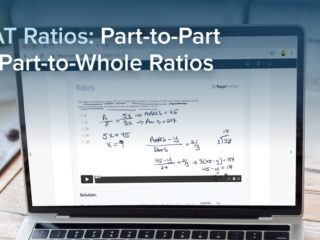Last Updated on May 12, 2023
GMAT OFFICIAL GUIDE DS
Solution:
We know the product (3◻)(2△) is equal to 864. Let’s first factor 864:
864 = 8 x 108 = 2^3 x 9 x 12 = 2^3 x 3^2 x 2^2 x 3 = 2^5 x 3^3
We see that 2^5 = 32 and 3^3 = 27; so, △ could be 2 and ◻ could be 7.
However, we can have other pairs of numbers besides 32 x 27 that multiply to be 864.
For example, one number could be 2^2 x 3^2 = 4 x 9 = 36 and the other number could be 2^3 x 3^1 = 8 x 3 = 24. In this case, we have △ = 6 and ◻ = 4.
However, there will not be any other pairs of numbers besides 32 x 27 and 36 x 24 that multiply to 864. So, if 864 is a product of a 30-something number and a 20-something number, it must be 32 x 27 (with △ = 2 and ◻ = 7) or 36 x 24 (△ = 6 and ◻ = 4).
Statement One Alone:
The sum of ◻ and △ is 10.
This means △ = 6 and ◻ = 4, since the other option has △ + ◻ = 2 + 7 = 9. Statement one alone is sufficient.
Statement Two Alone:
The product of ◻ and △ is 24.
This means △ = 6 and ◻ = 4, since the other option has △ x ◻ = 2 x 7 = 14. Statement two alone is sufficient.
Answer: D



